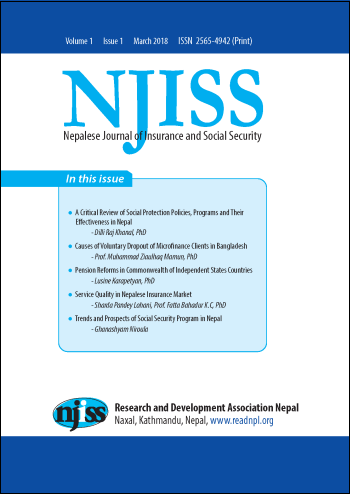Pension Reforms in Commonwealth of Independent States Countries
Keywords:
Pension, Retirement Age, Senility, Cumulative Elements, Commonwealth of Independent States (CIS)Abstract
The study aims to observe the pension systems and directions of pension reforms in the 10 member countries of commonwealth independent. Replacement rates for the countries preserving distributive pension system, gross replacement rates amongst countries that introduced cumulative components, average replacement rates, the average index of pension system load, life expectancy at birth, and natural increase in Commonwealth of Independent States (CIS) countries have been critically examined. Secondary data of above area have been used for 2000-2016 for 10 countries. Data were obtained from statistical book. Descriptive tools viz mean, standard deviation, growth and trend have been used analyse the data.
The study reveals amongst the countries which preserved the distributive pension system the highest indicator was registered in Belarus (41%), and the lowest was found in Moldova (25%). Armenia had the lowest gross replacement rate (21%) in 2016 while highest indicator was registered in Kazakhstan (38%). All CIS countries except Tajikistan encountered with demographic aging issue. The increase in the number of pensioners in CIS countries resulted in the overload of the employed population, countries with cumulative components, the burden is higher for Armenia it was 2.2 and 1.8 for Russia. Only five countries did not encounter natural growth issues amongst the CIS countries in 2016. In Tajikistan the natural growth formed 25 ‰ (promile), which is 1.7 times higher rate compared to 2000.
Downloads
Downloads
Published
How to Cite
Issue
Section
License
Copyright © Nepal Insurance and Risk Management Association

The articles in NJISS are licensed under a Creative Commons Attribution-NonCommercial 4.0 International License. This CC BY-NC license allows reusers to distribute, remix, adapt, and build upon the material in any medium or format for noncommercial purposes only, and only so long as attribution is given to the creator.
It includes the following elements:
BY - Credit must be given to the creator (authors)
NC - Only noncommercial uses of the work are permitted.

